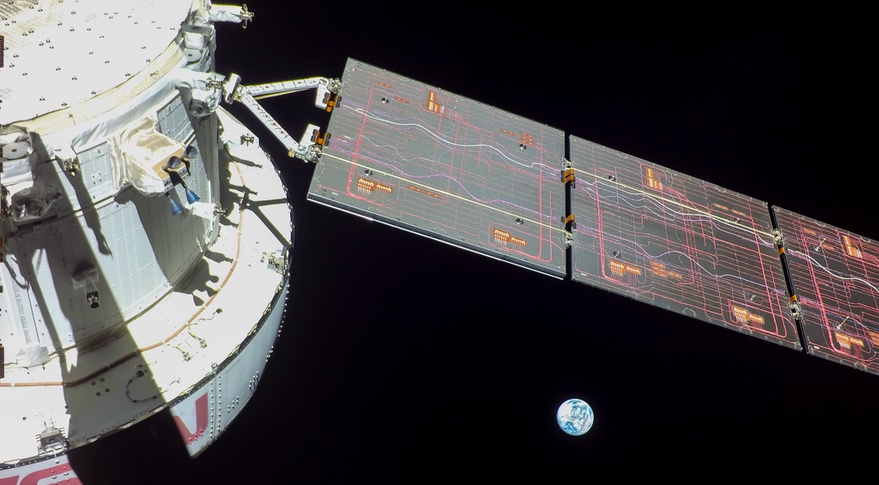WASHINGTON — NASA’s Orion spacecraft entered a high-altitude orbit around the moon Nov. 25 in the latest major step in the Artemis 1 uncrewed test flight.
The Orion spacecraft fired the main engine in its European Service Module at 4:52 p.m. Eastern for 88 seconds. The maneuver changed the velocity of the spacecraft by about 110 meters per second, placing the spacecraft into a distant retrograde orbit (DRO) around the moon.
The use of DRO is unique to Artemis 1. The Artemis 2 mission will fly a free return trajectory around the moon, while Artemis 3 and later missions will go into a near-rectilinear halo orbit around the moon, which will also be used by the lunar Gateway. NASA chose DRO for this mission since it is a stable orbit that enables testing of the spacecraft without requiring much fuel to maintain the orbit.
Orion, though, will not remain in DRO for long. The spacecraft will perform a maneuver Dec. 1 to depart DRO, heading back towards the moon. The spacecraft will conduct another burn during a lunar flyby Dec. 5 to put the spacecraft on track for a reentry Dec. 11, splashing down in the Pacific Ocean off the California coast.
Since its Nov. 16 launch, the Artemis 1 mission has gone well, with only a few minor issues. “In terms of overall systems failures, we haven’t seen a single thing on the rocket or on the spacecraft that would have caused us to question our reliability or our redundancy,” Mike Sarafin, NASA Artemis 1 mission manager, said at the most recent briefing about the mission Nov. 21.
At the time of that briefing, NASA said it was looking at two issues with the spacecraft, one involving the spacecraft’s star trackers and what Sarafin called “funny indications” on the power system on the service module, where one of eight units used to distribute power opened without being commanded to do so. Neither issue, he said, were “hard concerns or hard constraints” on the mission.
“We don’t fully understand what the system and the flight hardware is telling us, but we’ve got ample redundancy and we are recovering from these ‘funnies’ that we see,” he said.
On Nov. 23, NASA reported that it lost communications with Orion unexpectedly for 47 minutes starting at 1:09 a.m. Eastern. The loss of signal took place during one of a regular series of reconfigurations of the link between Orion and the Deep Space Network. It was unclear if the problem was with Orion or ground stations, and NASA has not provided an update on the issue since first reporting the glitch.
Sarafin also said at that Nov. 21 briefing that the Space Launch System rocket that launched Orion met or exceeded requirements. “The results were eye-watering,” he said. “Everything was either on predict or off by less than 1%.”
Engineers are also reviewing the status of the mobile launch platform, which sustained some damage from the launch, including having its elevator blast doors blown off and damage to the platform’s deck. “The mobile launcher has a little bit of damage to it, but it will be ready to fly the crewed launch on Artemis 2,” he said. That mission is scheduled to launch no earlier than late 2024.
